Related Research Articles

Astrology is a range of divinatory practices, recognized as pseudoscientific since the 18th century, that claim to discern information about human affairs and terrestrial events by studying the apparent positions of celestial objects. Different cultures have employed forms of astrology since at least the 2nd millennium BCE, these practices having originated in calendrical systems used to predict seasonal shifts and to interpret celestial cycles as signs of divine communications. Most, if not all, cultures have attached importance to what they observed in the sky, and some—such as the Hindus, Chinese, and the Maya—developed elaborate systems for predicting terrestrial events from celestial observations. Western astrology, one of the oldest astrological systems still in use, can trace its roots to 19th–17th century BCE Mesopotamia, from where it spread to Ancient Greece, Rome, the Islamic world, and eventually Central and Western Europe. Contemporary Western astrology is often associated with systems of horoscopes that purport to explain aspects of a person's personality and predict significant events in their lives based on the positions of celestial objects; the majority of professional astrologers rely on such systems.

Meteorology is a branch of the atmospheric sciences with a major focus on weather forecasting. The study of meteorology dates back millennia, though significant progress in meteorology did not begin until the 18th century. The 19th century saw modest progress in the field after weather observation networks were formed across broad regions. Prior attempts at prediction of weather depended on historical data. It was not until after the elucidation of the laws of physics, and more particularly in the latter half of the 20th century, the development of the computer that significant breakthroughs in weather forecasting were achieved. An important branch of weather forecasting is marine weather forecasting as it relates to maritime and coastal safety, in which weather effects also include atmospheric interactions with large bodies of water.

In the Middle Ages, the medicine of Western Europe was composed of a mixture of existing ideas from antiquity. In the Early Middle Ages, following the fall of the Western Roman Empire, standard medical knowledge was based chiefly upon surviving Greek and Roman texts, preserved in monasteries and elsewhere. Medieval medicine is widely misunderstood, thought of as a uniform attitude composed of placing hopes in the church and God to heal all sicknesses, while sickness itself exists as a product of destiny, sin, and astral influences as physical causes. On the other hand, medieval medicine, especially in the second half of the medieval period, became a formal body of theoretical knowledge and was institutionalized in the universities. Medieval medicine attributed illnesses, and disease, not to sinful behaviour, but to natural causes, and sin was connected to illness only in a more general sense of the view that disease manifested in humanity as a result of its fallen state from God. Medieval medicine also recognized that illnesses spread from person to person, that certain lifestyles may cause ill health, and some people have a greater predisposition towards bad health than others.
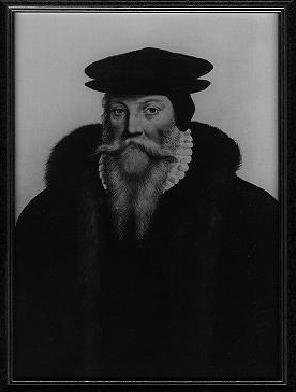
Caspar Peucer was a German reformer, physician, and scholar of Sorbian origin.

Electional astrology, also known as event astrology, is a branch found in most traditions of astrology according to which a practitioner decides the most appropriate time for an event based on the astrological auspiciousness of that time. It differs from horary astrology because, while horary astrologers seek to find the answer to a question based on the time the question was asked, electional astrologers seek to find a period of time which will result in the most preferable outcome for an event being planned.

Nicole Oresme, also known as Nicolas Oresme, Nicholas Oresme, or Nicolas d'Oresme, was a French philosopher of the later Middle Ages. He wrote influential works on economics, mathematics, physics, astrology, astronomy, philosophy, and theology; was Bishop of Lisieux, a translator, a counselor of King Charles V of France, and one of the most original thinkers of 14th-century Europe.

Astrological belief in correspondences between celestial observations and terrestrial events have influenced various aspects of human history, including world-views, language and many elements of social culture.

Astrology and astronomy were archaically treated together, but gradually distinguished through the Late Middle Ages into the Age of Reason. Developments in 17th century philosophy resulted in astrology and astronomy operating as independent pursuits by the 18th century.
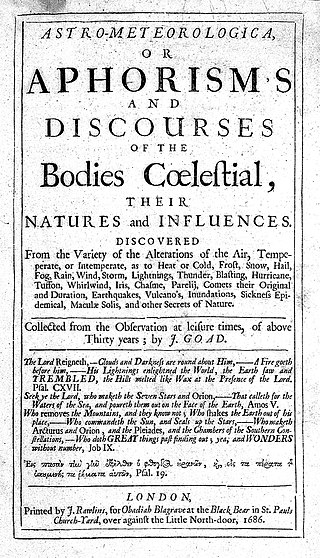
Astrometeorology or meteorological astrology is a pseudoscience that attempts to forecast the weather using astrology. It is the belief that the position and motion of celestial objects can be used to predict both seasonal climate and weather. Throughout most of its history astrometeorology was considered a scholarly tradition and was common in academic circles, often in close relation with astronomy, alchemy, meteorology, medicine, and other types of astrology.

Science in classical antiquity encompasses inquiries into the workings of the world or universe aimed at both practical goals as well as more abstract investigations belonging to natural philosophy. Classical antiquity is traditionally defined as the period between 8th century BC and the 6th century AD, and the ideas regarding nature that were theorized during this period were not limited to science but included myths as well as religion. Those who are now considered as the first scientists may have thought of themselves as natural philosophers, as practitioners of a skilled profession, or as followers of a religious tradition. Some of the more widely known figures active in this period include Hippocrates, Aristotle, Euclid, Archimedes, Hipparchus, Galen, and Ptolemy. Their contributions and commentaries spread throughout the Eastern, Islamic, and Latin worlds and contributed to the birth of modern science. Their works covered many different categories including mathematics, cosmology, medicine, and physics.

Tetrabiblos (Τετράβιβλος) 'four books', also known in Greek as Apotelesmatiká (Ἀποτελεσματικά) "Effects", and in Latin as Quadripartitum "Four Parts", is a text on the philosophy and practice of astrology, written in the 2nd century AD by the Alexandrian scholar Claudius Ptolemy.
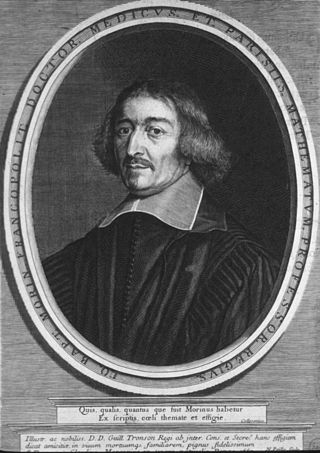
Jean-Baptiste Morin, also known by the Latinized name as Morinus, was a French mathematician, astrologer, and astronomer.

The Toledo School of Translators is the group of scholars who worked together in the city of Toledo during the 12th and 13th centuries, to translate many of the Islamic philosophy and scientific works from Classical Arabic into Medieval Latin.
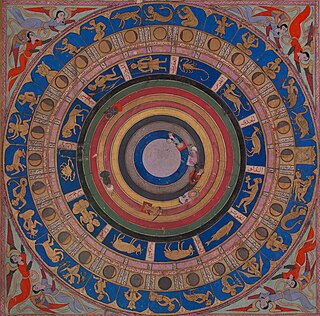
Some medieval Muslims took a keen interest in the study of astrology, partly because they considered the celestial bodies to be essential, partly because the dwellers of desert-regions often travelled at night, and relied upon knowledge of the constellations for guidance in their journeys. After the advent of Islam, the Muslims needed to determine the time of the prayers, the direction of the Kaaba, and the correct orientation of the mosque, all of which helped give a religious impetus to the study of astronomy and contributed towards the belief that the heavenly bodies were influential upon terrestrial affairs as well as the human condition. The science dealing with such influences was termed astrology, a discipline contained within the field of astronomy. The principles of these studies were rooted in Arabian, Persian, Babylonian, Hellenistic and Indian traditions and both were developed by the Arabs following their establishment of a magnificent observatory and library of astronomical and astrological texts at Baghdad in the 8th century.

Astrology had support in early Christianity, but support declined during the Middle Ages. Support for it grew again in the West during the Renaissance.

CorneliusGemma was a Flemish physician, astronomer and astrologer, and the oldest son of cartographer and instrument-maker Gemma Frisius. He was a professor of medicine at the Catholic University of Leuven, and shared in his father's efforts to restore ancient Ptolemaic practice to astrology, drawing on the Tetrabiblos.

European science in the Middle Ages comprised the study of nature, mathematics and natural philosophy in medieval Europe. Following the fall of the Western Roman Empire and the decline in knowledge of Greek, Christian Western Europe was cut off from an important source of ancient learning. Although a range of Christian clerics and scholars from Isidore and Bede to Jean Buridan and Nicole Oresme maintained the spirit of rational inquiry, Western Europe would see a period of scientific decline during the Early Middle Ages. However, by the time of the High Middle Ages, the region had rallied and was on its way to once more taking the lead in scientific discovery. Scholarship and scientific discoveries of the Late Middle Ages laid the groundwork for the Scientific Revolution of the Early Modern Period.

A lapidary is a text in verse or prose, often a whole book, that describes the physical properties and virtues of precious and semi-precious stones, that is to say, a work on gemology. It was frequently used as a medical textbook since it also comprises practical information about each stone's medical application. Several lapidaries also provide information about countries or regions where some rocks were thought to originate, and others speculate about the natural forces in control of their formation.
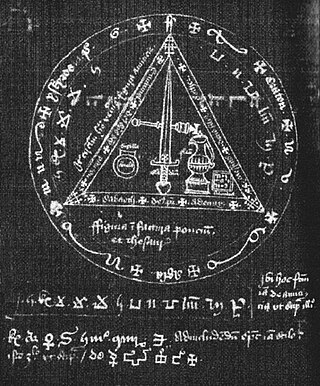
During the Middle Ages, magic took on many forms. Instead of being able to identify one type of magic user, there were many who practiced several types of magic in these times, including monks, priests, physicians, surgeons, midwives, folk healers, and diviners. The practice of magic often consisted of using medicinal herbs for healing purposes. Classical medicine entailed magical elements. They would use charms or potions in hopes of driving out a sickness. People had strongly differing opinions as to what magic was, and because of this, it is important to understand all aspects of magic at this time.